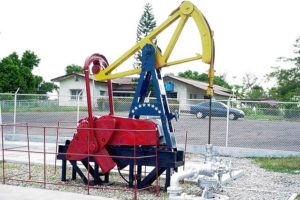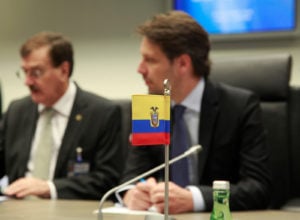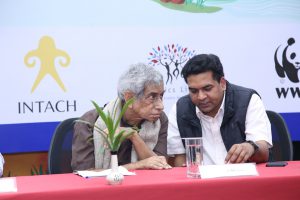For over a decade Argentina’s oil sector has profited from the government’s policy to keep domestic oil prices low. But when new president Mauricio Macri took office last year he vowed to reduce energy subsidies in an effort to tackle the country’s multi-billion dollar deficit, which has resulted in power shortages, blackouts and social discontent across the nation’s cities.
In November, a year after Macri’s election victory, his centre-right administration announced an end to subsidies for oil producers and set prices based on international markets, however, no timeline has been set. The result was an almost instant 25-30% fall in the local value of crude.
The implications of this decision for Argentina’s efforts to resolve its stubborn economic problems, reform its creaking energy sector and address the blackouts that plague its capital will be keenly watched, and not just by the Argentinian people at the sharp end of fluctuating fuel prices.
In a world of falling oil prices, foreign governments are facing similar challenges to remove high carbon subsidies and reorient investment into low carbon energy. As Argentina – a historic laggard when it comes to exploiting its renewable energy potential – gets on board, the opportunity for China, one of its biggest financiers, to build new partnerships is set to grow.
Protecting oil industry profits
In 2016, Argentinians paid more than double the international market price for their oil. At their peak, prices reached US$67.50 per barrel, compared to the WTI international crude price of US$33.26.
The decision of former President Cristina Fernández de Kirchner’s administration to maintain an artificially high oil price was supposedly to protect jobs in the Argentinian oil and gas sector, even as the price of oil tumbled on global markets.
Argentina is Latin America’s third biggest economy after Brazil and Mexico. In Vaca Muerta, it is also counts on the second-largest shale gas reserves and fourth largest shale oil reserve globally. Faced with a US$6 billion energy trade deficit in 2014, Kirchner’s government also sought to bolster what it considered to be a stable industry facing a period of uncertainty.
This policy meant that energy companies in Argentina made an additional US$5 billion from consumers in 2015, and a further US$3.5 billion this year, according to data from FIEL.
The main beneficiaries have been state-controlled YPF and Pan American Energy. More than 40% sits in the pockets of oil companies, 12% has gone to oil provinces as royalties; the remainder has gone into raising salaries and paying higher prices for suppliers.
Martín Prieto, director of Greenpeace Argentina, said that the government should be focusing on renewables and not oil.
“Argentina is assuring domestic companies that the wellhead price they receive is higher than in the rest of the world. It is neither economically nor environmentally justified. It is an incentive to continue investing in oil extraction. Renewable energy development is the only way to go,” he told Diálogo Chino.
Initially, pressure from the municipal governors to maintain oil bonuses led Macri to continue supporting the subsidised price. But the wider economic ramifications, such as the increasing deficit and complaints from other industries about a loss of competitiveness, motivated the government to remove support.
Dropping consumer subsidies
Elimination of consumer subsidies, which could commence this month, is now expected by the oil and gas sector. Madalena Energy, a Canadian company operating in Argentina, believes the crude oil price will be reduced by 30%.
“The labour unions and provinces are against this taking place but we all know that subsidies will eventually have to end,” said David Tawil, founder of the investment fund Maglan Capital, and owner of a stake in Madalena Energy.
Government sources have also maintained that negotiations are in progress between the labour unions, oil producing companies and oil provinces for the elimination of the subsidy.
“The Energy Minister’s policy is to continue with a gradual elimination of the subsidy scheme. It is a complicated task but the aim is geared towards the international price. Current prices artificially distort the competitiveness of renewable energy. The long-term goal must be to abandon fossil fuels,” stated Gerardo Rabinovich, director of the General Mosconi Energy Institute.
The decline in international crude prices has slowed down activity at Vaca Muerta. The reduction in subsidies for crude oil follows similar cuts in support for natural gas and electricity earlier this year.
This was one of the first measures adopted by the Macri government after more than ten years without a price adjustment for the cost of public services such as natural gas, electricity and water in Buenos Aires.
“Price rationalisation in Argentina makes investment in renewable energy attractive and is an invitation to energy saving. In Argentina energy waste was encouraged in the absence of any incentives for rational energy consumption,” said Prieto.
The previous administration’s decision not to increase prices resulted in an extraordinary increase in energy subsidies, which rose from 0.2% of GDP in 2004 to 2.9% in 2014, totalling 342 million pesos (US$21.3 million) in that period, based on a report from the Argentine Association of Budget and Public Financial Administration (ASAP).
But that was not the only problem. The tariff freeze discouraged energy distribution companies from making the required investments in technical upgrades due to the lack of liquidity, resulting in frequent power outages during both summer and winter. Meanwhile, the subsidies, which were supposed to benefit lower income groups became skewed towards higher income groups.
“Energy subsidies were transformed into the second largest state expenditure and this largely explains Argentina’s deficit. More is spent on energy subsidies than on health and education combined. They are also poorly distributed. The richest 20% receive four times as much in subsidies,” said Rafael Flores, president of ASAP.
Having only reduced rather than eliminated subsidies, Argentina will finish the year with another increase in its budget deficit. To date, they have increased 10% on last year, amounting to 133 billion pesos (US$8.3 billion).
Renewable energy
Oil and natural gas subsidies have also deterred investment in renewable energy, despite the country’s significant potential. Argentina’s energy mix remains dominated by high-carbon energy sources at 87% oil and gas, with only 1.8% representing wind and solar energy.
In 2017, 8% of Argentina’s electricity generation should be from wind, solar or small hydroelectric energy plants, among other sources, based on a recent law approved by Congress. The regulation also requires that to be increased to 20% in 2020.
The government has already started auctioning renewable energy capacity with 17 projects (through the Renovar programme) awarded totalling 1,109 megawatts (3.2% of the country’s total installed energy capacity). This includes 12 wind projects, four solar PV and one biogas, with a required investment of US$1.8 billion. A further government tender is expected to award another 600 megawatts, following the significant investor interest.
“Argentina has been transformed into a major place for attracting investors in renewable energy. The matter has become a state policy,” said Juan Bosch, chairman of SAESA, a company that develops renewables projects.
He added: “Diversification of our energy mix is now the great challenge for the country.”







![Biomass burning is a major source of air pollution. [photo by Ahron-de Leeuw]](https://dialogue.earth/content/uploads/2016/12/Varanasi-ghat-Ahron-de-Leeuw-300x199.jpg)
